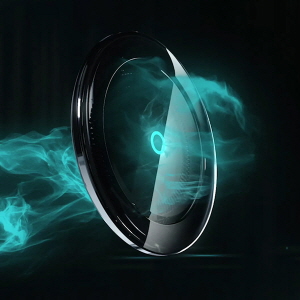자료실
[해외칼럼] 무선 충전 미래에 대한 근거
- 작성일2023/03/17 14:53
- 조회 548
[번역요약]
현재 무선 충전은 전 세계에서 가장 일반적으로 사용하며, 계속해서 사용률이 증가하고 있는 표준 기술입니다.
헤드폰과 휴대폰까지, 가정, 사무실, 공항, 자동차, 식당 등 여러 공간에서 무선 충전을 사용합니다.
이 기사에서는 무선 충전을 왜 더 많이 사용하는지에 대한 이유와 방법을 서술하고자 합니다.
유선 충전의 문제
유선 충전 방법은 몇 가지 불편한 문제점이 있습니다.
우선 충전을 위해 항상 케이블을 가지고 다녀야 합니다. 또, 보통 케이블을 사용했을 때 올바르게 충전되지 않을 수 있습니다.
마지막으로 미흡한 케이블 관리로 인해 배터리가 손상되어 성능이 저하 될 수 있습니다.
유선 충전 문제를 보완하는 무선 충전
위의 문제를 보완하기 위해 많은 충전 장치에 맞게 무선 충전 기술이 발전하고 있습니다.
무선 충전은 편리성, 신뢰성, 배터리 관리를 향상시킵니다.
오늘날 무선 충전은 자동차, 항공우주, 의료, 제조 및 가전 산업 등 더 많은 분야에서 사용하고 있으며, 미래에는 더 많은 분야에서 사용할 가능성이 매우 높습니다.
무선 충전의 종류
- 유도 충전 : 자기 유도를 사용하여 몇 밀리미터 거리에서 최대 10W 전력을 전송합니다.
유도 충전은 주로 스마트폰, 스마트워치, 이어팟 등 액세서리 충전 시 사용합니다. - 무선 주파수 기반 충전 : 무선 주파수를 사용하여 몇 센티에서 최대 몇 미터까지 전력을 전송합니다.
무선 주파수 기반은 안전 규제의 이유로 1W 미만의 IoT 장치 및 센서와 같은 기기에서만 사용이 가능합니다. - 공진 충전 : 유도 충전과 마찬가지로, 자기 유도를 기반으로 하지만, 공명점에서 작동하여 더 넓은 공간 사용이 가능하고, 몇 센티미터까지 충전할 수 있습니다.
공진 충전은 블루투스 같은 대역 외 통신 기반을 사용하며 일반적으로 6.78MGz(로봇, 전기차)로 작동합니다. - Magnetic Inductive는 모든 장치에 고유한 기술을 제공하고 자기 유도와 공명 사이 격차를 줄여 단점을 해결합니다.
무선 충전의 장점
무선 전력은 많은 장점을 가지고 있습니다.
무선 충전은 배터리를 안전하게 충전이 가능합니다. 또, 잃어버리기 쉬운 케이블이나 어댑터를 가지고 다녀야 하는 번거로움도 없습니다. 지금까지의 케이블-콘센트 방식의 충전으로 인한 장치 과열이나,
전기 고장에 대해 걱정할 필요가 없습니다.
Apple, 화웨이, LG, 모토로라, 삼성, 소니 등 주요 스마트폰 제조사에서 무선 충전을 이용하고 있고 이외의 다른 제조사에서도 무선 충전을 기술 이용량이 증가하고 있습니다.
전 세계가 케이블과 콘센트에서 벗어나면서 무선 전력의 혁신은 계속 될 것입니다.
[칼럼원문] 작성자: George J. Newton, 출처: https://powermat.com/blog/the-future-of-wireless-power-is-here/ 에서 일부 내용을 발췌했습니다.
The Future of Wireless Power is Here

Wireless power, also referred to as wireless charging, is the way to go today and is a technology standard increasing yearly worldwide.
People no longer must accept the traditional standard of being “tied down” by cords. From headphones to telephones, all things are becoming wireless.
Wireless power technology began in earnest this century and is in line to transform the world to become completely wireless.
As of 2021, there are more than 10 billion active wireless connected devices. Cellular phone adaption is leading this industry, charging wireless at home, at the office, at the airport, in restaurants in your car, and many other locations.
Who has the time to look for a charger or adapter to plug into a wall? It can be tedious to connect and plug in a charger to give a device that much-needed charge.
The good news is that wireless power technology is continuously evolving.
This brief overview explains why and how this technology is on the rise and being implemented into more and more applications.
The Problem?
“The problem is that charging your device by plugging it in is growing obsolete for several reasons,” says Phil Shelton, a marketing blogger at Write my X and 1 Day 2 write.
“One reason is that carrying around cords to charge your device is a tedious task in a fast-paced world. Another reason is that your device might not charge correctly using standard cords.
Lastly, standard cables’ management might hurt your battery and limit battery functionality.
The Solution?
To tackle these problems, there has been a surgency in implementing wireless power solutions for an ever-growing array of applications.
Wireless power solutions increase convenience, reliability, and battery management. In today’s world, wireless power solutions are being implemented increasingly in the automotive, aerospace, medical,
manufacturing, and consumer electronics industries, to mention just a few, but the possibilities are enormous.
Types Of Wireless Charging
Now that you know the benefits of wireless power, here are some methods:
Inductive charging: Uses magnetic induction to transfer up to a few 10’s of watts over a few mm of distance.
This technology has been adopted mainly in smartphones and accessories like smartwatches and ear pods.
Radio Frequency based charging: Uses radio frequency to transfer power over a few centimeters and up to a few meters. Due to safety and regulatory reasons,
this technology is limited to sub <1W applications such as IoT devices and sensors.
Resonance charging: Like inductive charging, this is based on magnetic induction, but it operates on the resonance point, providing more spatial freedom and enabling charging up to a few centimeters.
Due to the challenges of working at the resonances point resonances technologies have adopted communication-based on out-of-band communication such as Bluetooth and normally operated at 6.78MGz
(examples: robots, electrical vehicles).
Advantages?
“Wireless charging provides many advantages, especially in today’s world,” says Charlie Anderson, a business writer at Origin Writings and Brit Student.
“First, wireless charging technology offers a secure way of charging battery-operated devices so that you can feel more confident where and when you charge.
Plus, it eliminates the struggle of carrying many cords and adapters that can easily get lost.
In addition, you don’t have to worry about the device overheating from charging from the traditional cord-and-outlet method, nor worry about any electrical failures that might arise.
And it’s Qi-friendly, meaning that it can inductively charge across distances of up to 40mm.”
With that said, the following major smartphone manufacturers are utilizing wireless charging technology, and it is increasing across all companies, such as:
- Apple
- Huawei
- LG
- Motorola
- Samsung, AND
- Sony
- Conclusion
As you can see, wireless power solutions are becoming the future of charging devices; as the world moves away from cords and plugs, wireless power innovations will continue to evolve.







